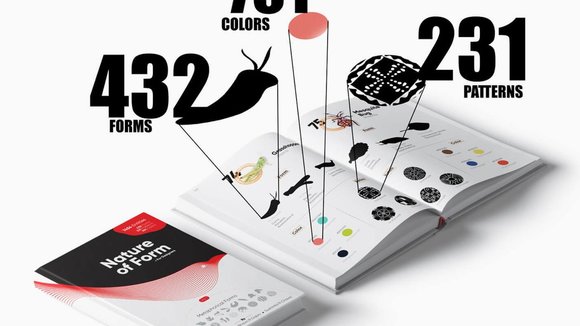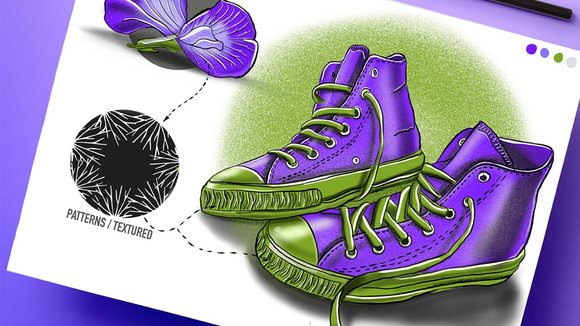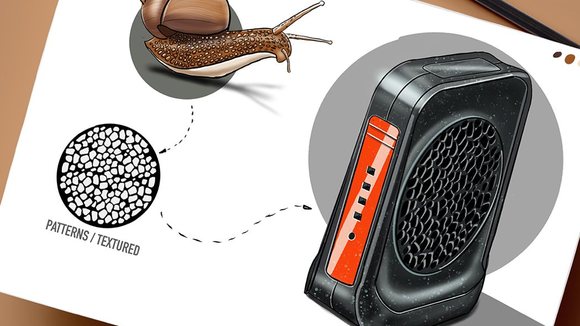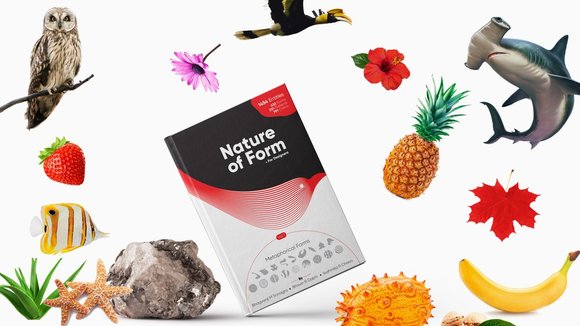1/12
This handbook is like Wikipedia for biomimicry and nature-inspired design
Designed to do for nature-inspired design what the Pantone Shade Card did for colors, the Nature of Form handbook captures and carefully documents as many as 1454 forms, patterns, and colors, all pulled from flora and fauna.
The book was created by a group of multidisciplinary designers to act as exhaustive reference material for biomimetic design. By breaking down a variety of natural examples by form, pattern/texture, and color, the handbook puts all the nature-based form inspiration you need at your very fingertips. Created to help designers and artists across multiple disciplines, the book painstakingly documents a variety of plants and animals, creating an easy-to-access database of their forms, patterns, and dominant colors. These examples could save you hours of research on Wikipedia or Pinterest (or any other place you go for research) by simply giving you a sort of Yellow-Pages of organic design. The book’s multiple examples come with images, forms, silhouettes, color values and palettes, and even physical attributes that help spark the imagination and get those creative juices flowing. Whether you’re an industrial or transportation designer looking for aesthetic cues, or a graphic designer looking for patterns, logo inspiration, or even color palettes, the Nature of Form puts a veritable encyclopedia of nature-inspired design in the palm of your hand.
Designed to be a go-to reference book, Nature of Form makes it easy to conceptualize, detail, and design effective and aesthetic products by tapping into the world’s largest design database… nature itself!
Designers: Bhagvanji Sonagra, Bhavin Dabhi & Sushmita Chava
(44% off). Hurry, only 20/50 left!
Nature of Form is the world’s first book on collection of organic elements from nature into forms, textures, and colors to inspire your design by nature.
Do you ever find yourself brimming with adept solutions? Like, wonder where you could use that material? How they could’ve used a different font or color or stroke? How the perspective could be so out of proportion?
But also found yourself in a designer’s block when you really needed to get work done?
In design, there’s a process to derive aesthetics, called ‘Form Development’. It involves having to take inspirations from around and derive lines and curves from it. It’s all good but years and years of same practice has lead to the taming of many inspirations, especially form nature. The word ‘speed’ more of less takes our mind to cheetahs or other such obvious animals. So what happens when everyone starts getting inspired form more or less the same sources? When in actuality, a frigate bird or a sailfish is faster than a cheetah.
Luckily, the design process helps a great deal, but let’s address the Lego under our feet, the formidable task of generating aesthetics. Toss in a few curves? chamfers and fillets? Maybe angular trims? Get a cup of Nature? Take a stroll amongst the greens, wait for an inspiration to strike at the speed of light?
Inspiration may strike at the oddest of times at the oddest of places. What if we were to expand our horizon and look into the endless variety that nature presents us with?
This book features an exclusive original collection of forms, textures & color, derived from nature. The forms are classified into characteristic attributes as well. They reckon nifty use of this data in the fields of Product Design, Graphic Design, Textile Design, Fashion Design, Transportation Design, Animation, Artistry, other Creative disciplines, & certainly, by an Inquisitive Individual.
They are building a system that looks at form development from a new perspective. This product is one, but many at the same time. It makes you wonder. Each reader can manifest their own meaning into it, giving us the possibility of numerous derivatives from one single book.
Inside the Book: A collection of extractions of Organic Elements from Nature into Forms, Textures, and Colors. Total: 1454 Entities, 432 forms + 231 Patterns +791 colors.
The 192-page publication intends to inspire and teach designers how to use various natural metaphors in the Design. The use of the derived elements is up to the designers, whether they want to use them in various designs, ideation, sketching, drawing, 3d modeling, 3d patterns, or something entirely anew. The elements can be used in fields of furniture, lighting, product design, fashion, automotive, styling, architecture, typography, etc.
The book consists of 150 organic elements, classified into 10 categories:
– Flowers x 12
– Aquatic Animals x 16
– Vegetables x 20
– Land Animals x 13
– Non-Living x 12
– Insects x 18
– Leaves x 16
– Fruits x 19
– Birds x 15
– Trees & Plants x 9
The book is subjective to the context of its use. For example say, if you’re:
, you may use the forms and textures of the Starfish in creating a grip texture on your products.
, you may find the naturally coupled color theme and the symmetrical forms of the Starfish to tessellate and create a spread.
, you may find the color schemes and the textures useful in producing good illustrations and compositions.
, you may use the attributes to find the power curves for your next automobile sketch.
, you can use the color themes to contextually generate a more realistic web experience.
, you can feed your creative end by converting the 3D textures into meshwork and derive stress and strength parameters.
It simply makes your process of inspiration hunt easier. The uniqueness of this product lies in the fact that it is one, but many at the same time. The reader can manifest his/ her/ their own meaning into it.
(44% off). Hurry, only 20/50 left!
发布于2020-10-22
设计师
Bhagvanji Sonagra, Bhavin Dabhi & Sushmita Chava
颜色
相关推荐












